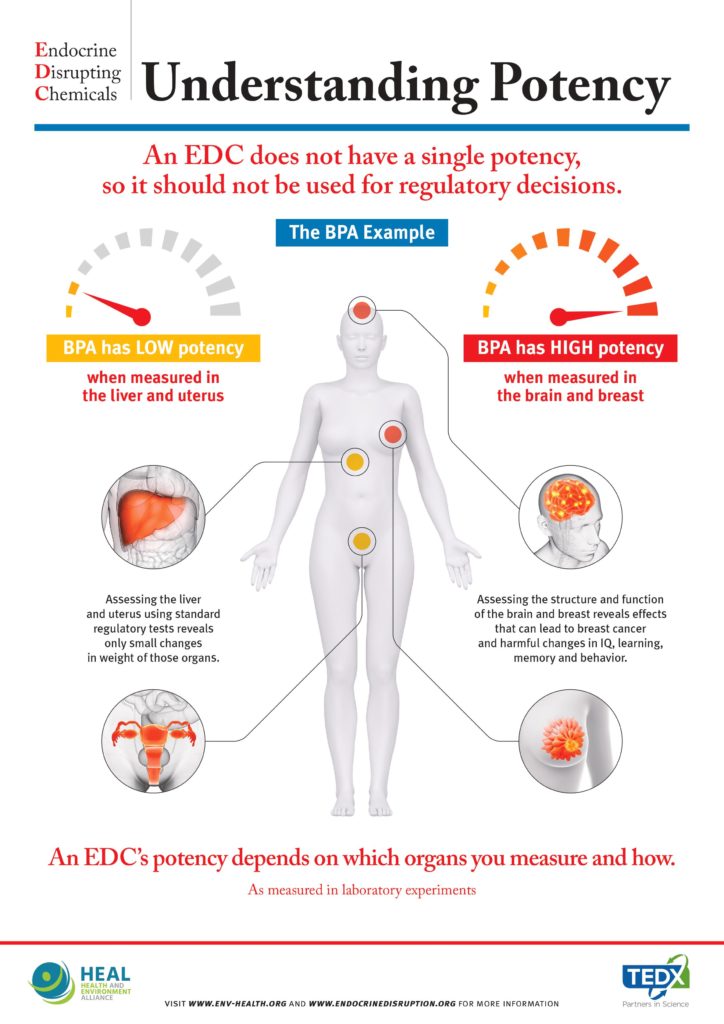The EDC-Free Europe coalition, of which HEAL is a member, has launched a new infographic illustrating the harmful impacts of exposure to known and suspected endocrine disruptors on our health and the environment.
The potency of endocrine disrupting chemicals (EDCs) depends on which organs you measure and how. An EDC does not have a single potency, so it should not be used for regulatory decisions. But what exactly is potency?
Potency is the measure of a chemical’s ability to have a specific effect on cells, tissues, or organs in the body. Some organs are more sensitive than others, meaning that they respond to smaller amounts of a chemical. Therefore, it is not possible to establish a single potency for an endocrine disruptor. In fact, an EDC potency varies depending upon where you measure it in the body.

For example, Bisphenol A (also known as BPA) has low potency when measured in our liver and uterus, but it has high potency when the same amount of it is measured in the brain and breast. If one were to rely on only one potency value as an indicator of safety, they might falsely conclude that exposure to BPA is safe due to its low potency in the uterus.
So why is a good understanding of the concept of potency so important?
When governments test chemicals for their safety, they don’t always test the most sensitive organs. This leads to inaccurate estimates of safe levels of exposure. It also promotes the false conclusion that certain EDCs are not potent enough to have an impact our health.
In order to protect people from harmful chemicals, regulatory agencies should measure the effects of EDCs in the most sensitive organs, like the developing brain and breast, and not assume that EDCs have a single potency.
Understanding potency is the third and final infographic in our HEAL and TEDX – The Endocrine Disruption Exchange series. It is closely tied to the first two, which explain why Low Doses Matter, and why Modern Science Matters. View them all and use them to educate others on these important endocrine disruption topics.




